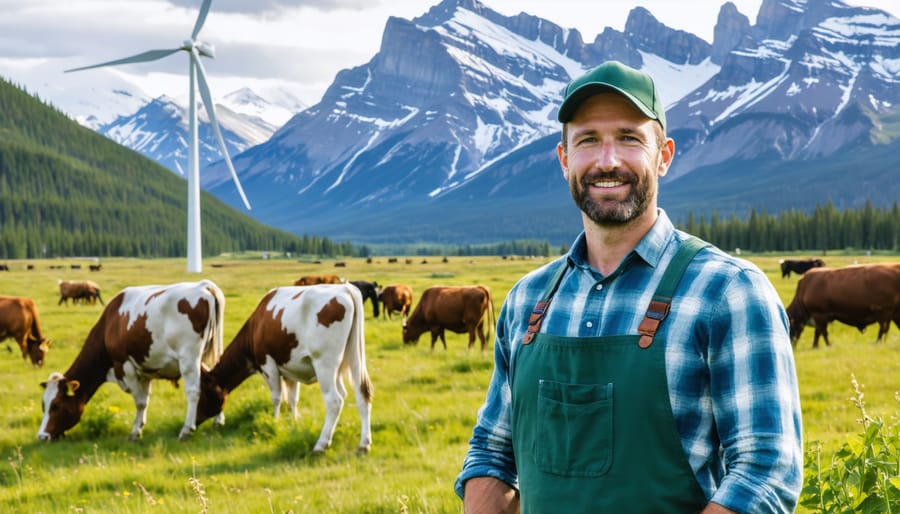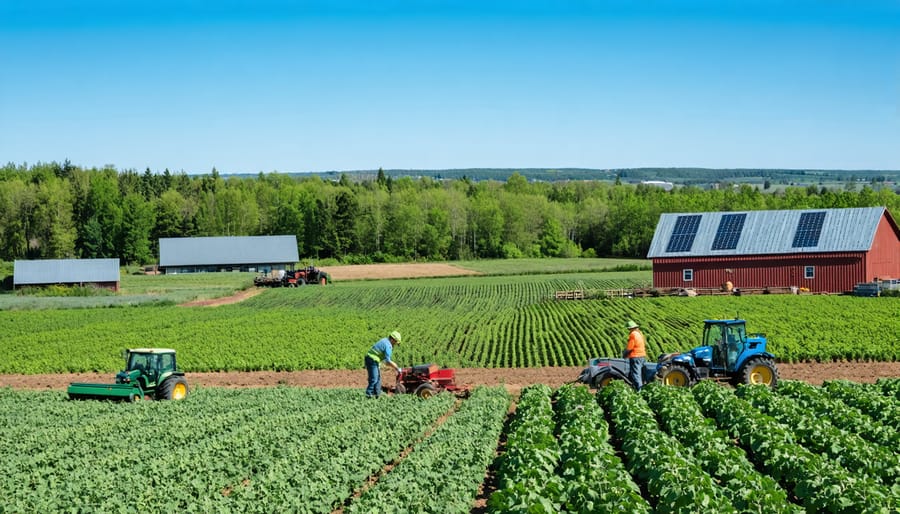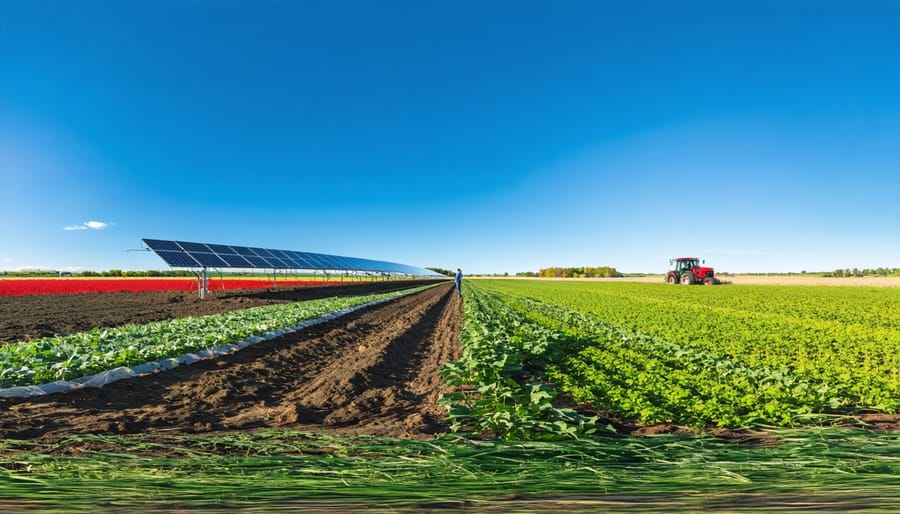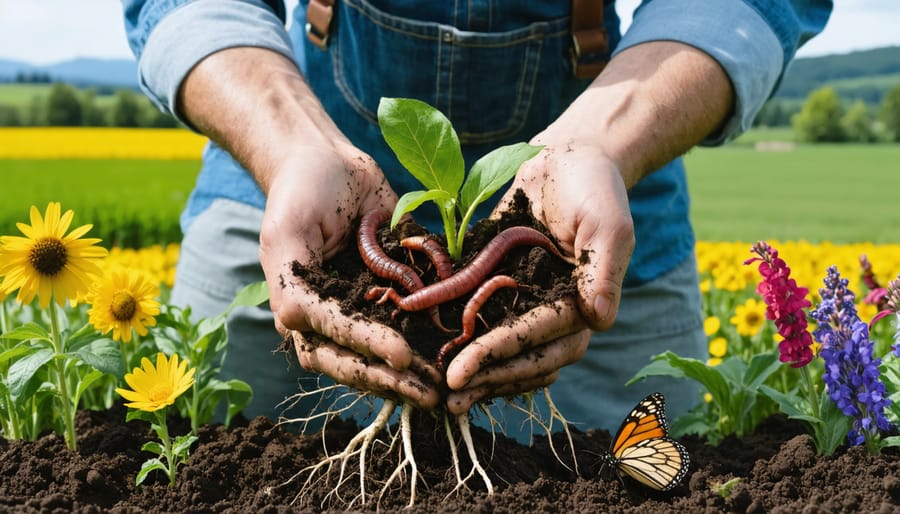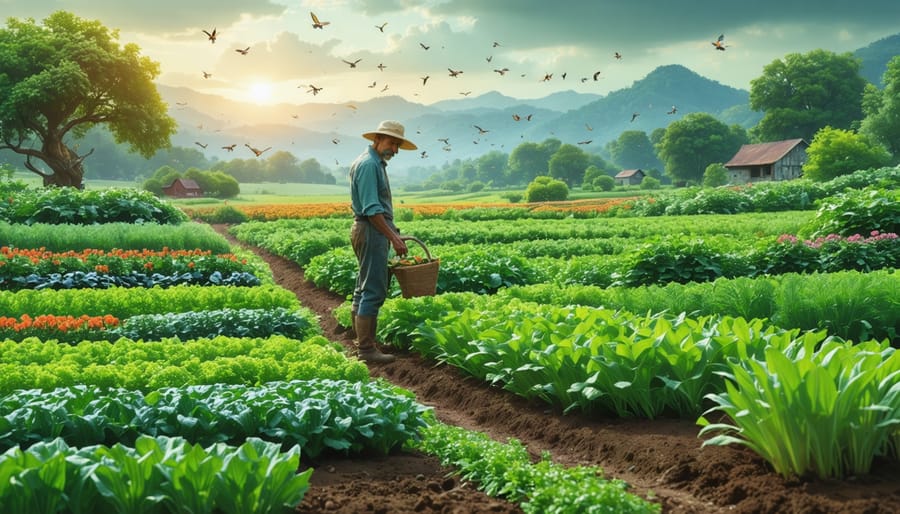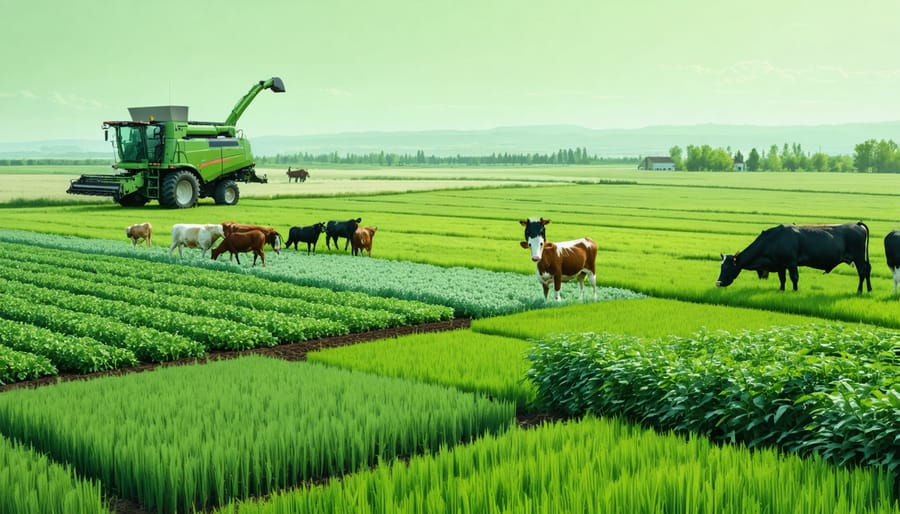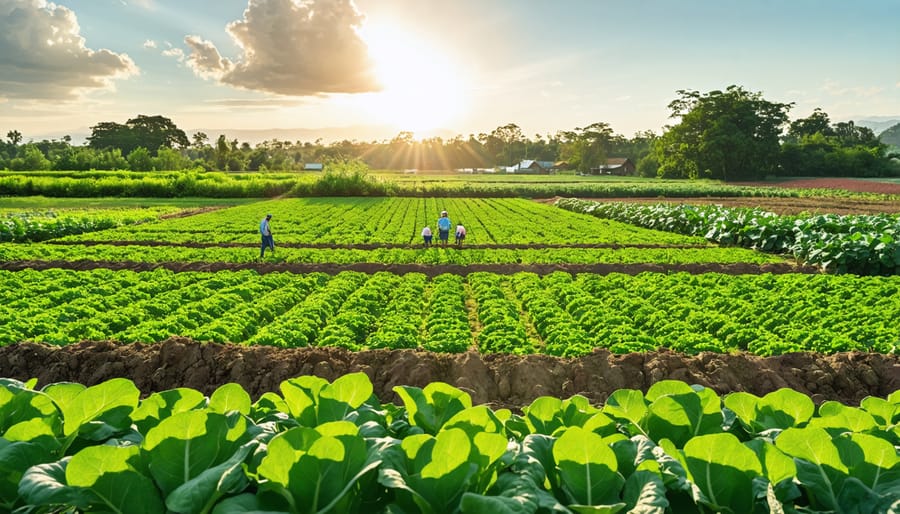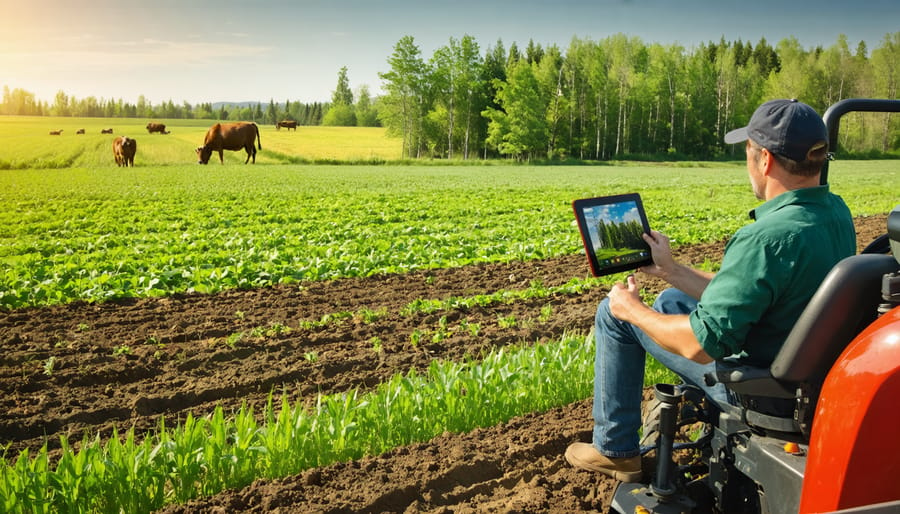Harness the power of your soil to combat climate change and enhance your farm’s resilience. By implementing targeted agricultural practices, you can actively sequester atmospheric carbon in your soil, contributing to global efforts to mitigate greenhouse gas emissions. This article will guide you through the science behind soil carbon sequestration, practical techniques to maximize its potential on your farm, and methods to monitor and quantify your impact. As an Albertan farmer, you have a unique opportunity to be part of the solution while improving your soil health and productivity. Join the growing community of producers adopting these sustainable practices and make a meaningful difference for our planet and future generations.
Understanding Carbon Sequestration in Soils
The Carbon Cycle and Soils
The carbon cycle is a complex process that involves the exchange of carbon between the atmosphere, oceans, and terrestrial ecosystems. Soils play a crucial role in this cycle, acting as both a source and sink for carbon. Through vital soil processes such as photosynthesis, decomposition, and respiration, carbon is continuously cycled between the atmosphere and the soil.
Plants absorb atmospheric carbon dioxide during photosynthesis, converting it into organic carbon compounds that are stored in their biomass. When plants die and decompose, a portion of this carbon is released back into the atmosphere, while the remainder is incorporated into the soil organic matter. Soil microorganisms break down this organic matter, releasing nutrients and carbon dioxide in the process.
The ability of soils to store carbon depends on various factors, including soil type, climate, and land management practices. Healthy, well-managed soils with high organic matter content have a greater capacity to sequester carbon, while degraded or heavily tilled soils tend to lose carbon to the atmosphere. By adopting sustainable land management practices, farmers can enhance their soils’ ability to store carbon, contributing to climate change mitigation while also improving soil health and productivity.
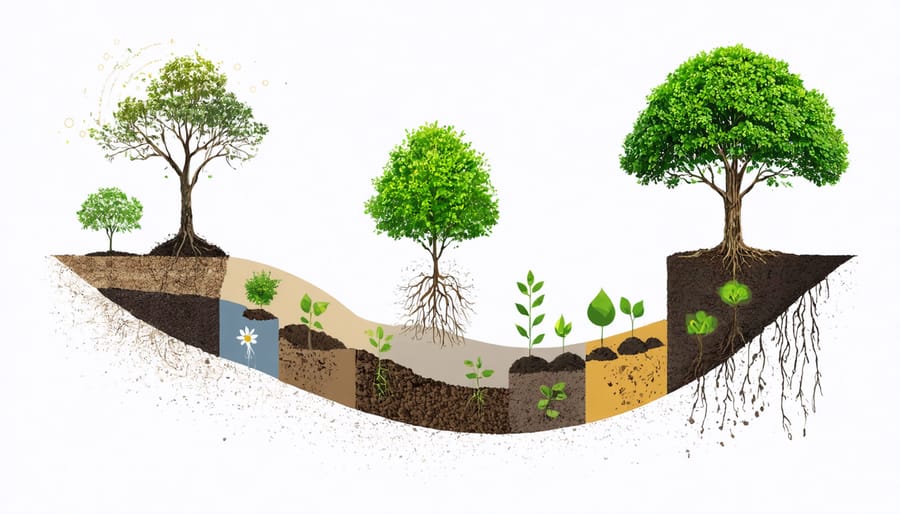
Factors Affecting Soil Carbon Storage
Several key factors influence the ability of soils to store carbon. Soil type plays a significant role, with clay-rich soils typically having a higher capacity for carbon sequestration compared to sandy soils. This is due to the greater surface area and chemical structure of clay particles, which can better protect organic matter from decomposition.
Climate also has a substantial impact on soil carbon storage. In general, cooler and wetter conditions slow down decomposition rates, allowing more carbon to accumulate in the soil. Conversely, hot and dry conditions accelerate decomposition, releasing stored carbon back into the atmosphere.
Crucially, farm management practices can make a big difference in soil carbon levels. Techniques like reduced tillage, cover cropping, and diverse crop rotations help maintain soil structure, minimize disturbance, and provide continuous living roots – all of which enhance carbon storage. Applying organic amendments such as compost or manure adds carbon directly while improving overall soil health.
By understanding these factors, Alberta farmers can adopt targeted strategies to optimize carbon sequestration on their specific soils and climate conditions. Small changes in management can yield significant benefits over time, contributing to both soil productivity and climate change mitigation.
Farming Practices That Enhance Soil Carbon Sequestration
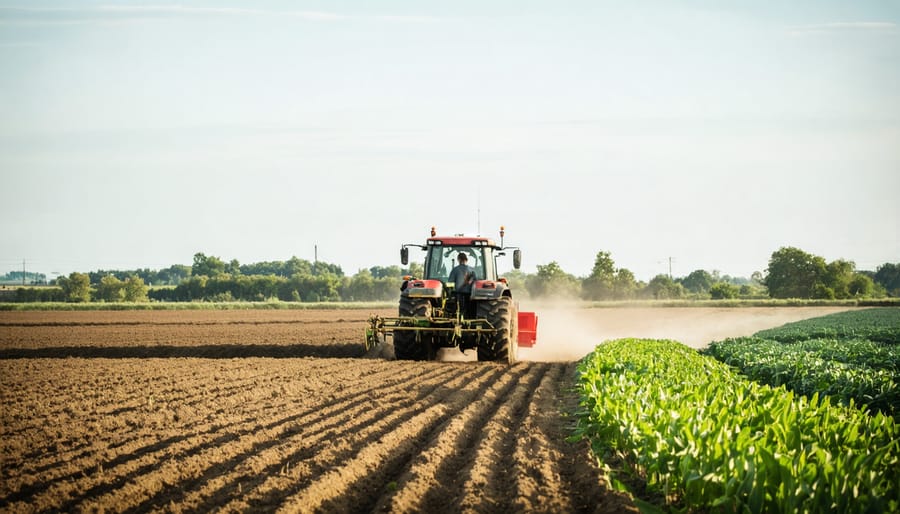
Conservation Tillage
Conservation tillage, which includes practices like no-till, strip-till, and minimum tillage, is a powerful strategy for preserving soil carbon. By minimizing soil disturbance, these techniques help maintain the integrity of soil aggregates, which are essential for protecting organic matter from decomposition. When soil is left undisturbed, beneficial fungi and bacteria can thrive, creating a network of living biomass that contributes to stable carbon storage.
In the Canadian context, organic no-till has gained traction as a way to combine the benefits of conservation tillage with the principles of organic agriculture. By using cover crops, crop rotations, and careful residue management, farmers can suppress weeds and maintain soil health without relying on herbicides or intensive tillage.
Research has shown that adopting conservation tillage can significantly increase soil carbon levels over time. A long-term study in Alberta found that no-till practices increased soil organic carbon by an average of 5.4 tonnes per hectare compared to conventional tillage. By scaling up these practices across the province, farmers have the potential to make a substantial contribution to Canada’s climate change mitigation efforts while also improving their soil health and productivity.
Cover Cropping
Cover crops, such as legumes, grasses, and brassicas, play a vital role in improving soil health and enhancing carbon sequestration. By planting cover crops between main crop rotations or in fallow periods, farmers can protect the soil from erosion, suppress weeds, and add organic matter. As cover crops grow, they absorb atmospheric carbon dioxide through photosynthesis and store it in their biomass. When they decompose, this carbon is incorporated into the soil, contributing to the formation of stable soil organic matter and healthy soil structure. Leguminous cover crops, like clover and alfalfa, also fix nitrogen from the air, reducing the need for synthetic fertilizers. By minimizing soil disturbance and keeping the ground covered, cover cropping helps maintain soil moisture, supports beneficial microorganisms, and improves nutrient cycling. Farmers in Alberta can select cover crop species based on their specific soil types, climatic conditions, and cropping systems to maximize the benefits for both soil health and carbon sequestration. Incorporating cover crops into agricultural practices not only contributes to climate change mitigation but also enhances the long-term productivity and resilience of farmland.
Crop Rotation and Diversity
Integrating diverse crop rotations into your farming practices can significantly boost soil carbon sequestration. By alternating between different crop types, such as legumes, cereals, and oilseeds, you promote a thriving soil ecosystem that efficiently captures and stores carbon. Legumes, like alfalfa and field peas, form symbiotic relationships with nitrogen-fixing bacteria, reducing the need for synthetic fertilizers and enhancing soil organic matter. Cover crops planted between main crop cycles add biomass, prevent erosion, and keep living roots in the soil, further contributing to carbon storage.
Diversifying your crop rotation also supports soil health by breaking pest and disease cycles, reducing the reliance on pesticides that can harm beneficial soil organisms. A vibrant soil food web, teeming with microbes, fungi, and invertebrates, plays a crucial role in decomposing plant residues and converting them into stable soil organic carbon. By embracing crop diversity and minimizing soil disturbance, you create an optimal environment for these soil heroes to work their carbon-sequestering magic.
As an Alberta farmer, you have a unique opportunity to leverage the power of crop rotation to combat climate change while enhancing your soil’s productivity. Start by assessing your current rotation and identifying opportunities to introduce new crops that complement your system. Seek advice from local agronomists, attend workshops, and connect with fellow farmers who have successfully implemented diverse rotations. Together, we can harness the potential of our soils to build a more sustainable and resilient agricultural future for our province.
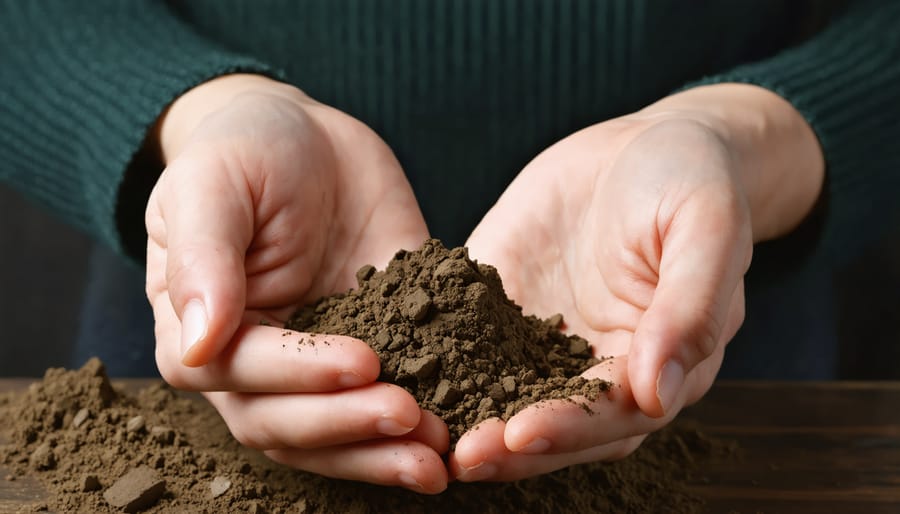
Measuring and Monitoring Soil Carbon
Soil Sampling Basics
To obtain representative soil samples, start by determining the number of samples needed based on field size and variability. Divide the field into uniform sections, considering factors like soil type, topography, and management history. Within each section, collect 15-20 cores in a zigzag pattern to a depth of 15-30 cm, depending on tillage practices. Mix the cores thoroughly in a clean bucket to create a composite sample for each section. Take approximately 500 grams of soil from the composite, place it in a labeled bag, and send it to a reputable lab for analysis. Avoid sampling when the soil is excessively wet or shortly after fertilizer or amendment applications. Consistency in timing, depth, and pattern is key for tracking changes over time. Proper sampling technique ensures results accurately reflect your soil’s carbon content and sequestration potential, allowing for informed management decisions.
Lab Testing and Analysis
Getting your soil analyzed is a crucial step in understanding its carbon sequestration potential and tracking progress over time. In Alberta, farmers can access soil testing services through various laboratories, such as those associated with universities, agricultural organizations, or private companies. These labs typically offer a range of tests, including organic matter content, soil texture, and nutrient levels.
When submitting soil samples, it’s essential to follow proper sampling techniques to ensure accurate results. This involves collecting samples from multiple locations within a field, at consistent depths, and avoiding contamination. Many labs provide specific instructions and kits to guide farmers through the sampling process.
Interpreting soil analysis results may require some guidance from agricultural professionals or extension services. However, key indicators to look for include soil organic matter percentage, which directly relates to carbon content, and parameters like pH and nutrient levels that influence soil health and plant growth. Tracking these metrics over time can help farmers assess the effectiveness of their carbon sequestration efforts and make informed management decisions.
In addition to lab testing, tools like remote sensing and soil carbon modeling can provide valuable insights on a larger scale. These technologies, while more complex, offer opportunities for farmers to collaborate with researchers and contribute to a broader understanding of soil carbon dynamics across the province.
Alberta farmers have an incredible opportunity to be at the forefront of the fight against climate change. By adopting carbon-friendly practices and leveraging the power of your soils, you can make a significant impact on the environment while enhancing the health and productivity of your land. Implementing soil solutions like cover cropping, reduced tillage, and diverse crop rotations not only sequesters carbon but also improves soil structure, water retention, and nutrient cycling. These practices can lead to more resilient farms that are better equipped to withstand the challenges posed by a changing climate.
As stewards of the land, Alberta farmers have a unique responsibility and opportunity to lead the charge in sustainable agriculture. By working together, sharing knowledge, and embracing innovation, we can build a stronger, more vibrant agricultural community that is both profitable and environmentally responsible. The time to act is now. Let’s harness the incredible potential of our soils and show the world that Alberta farmers are committed to creating a better future for generations to come. Start small, but start today – every acre counts in the quest to combat climate change and build a more sustainable agricultural landscape.



